Sound+Image Verdict
The phono output is the best quality, the line-level output the most versatile, and the Bluetooth wireless playback the most fun. A solid performance and a cool aesthetic combine to make JBL’s Spinner BT a top performer at its price
Pros
- +
Solid performance for the price
- +
Built-in phono stage
- +
Bluetooth output
- +
Cool design
Cons
- -
'Matching' wireless speaker doesn't have aptX
Why you can trust What Hi-Fi?
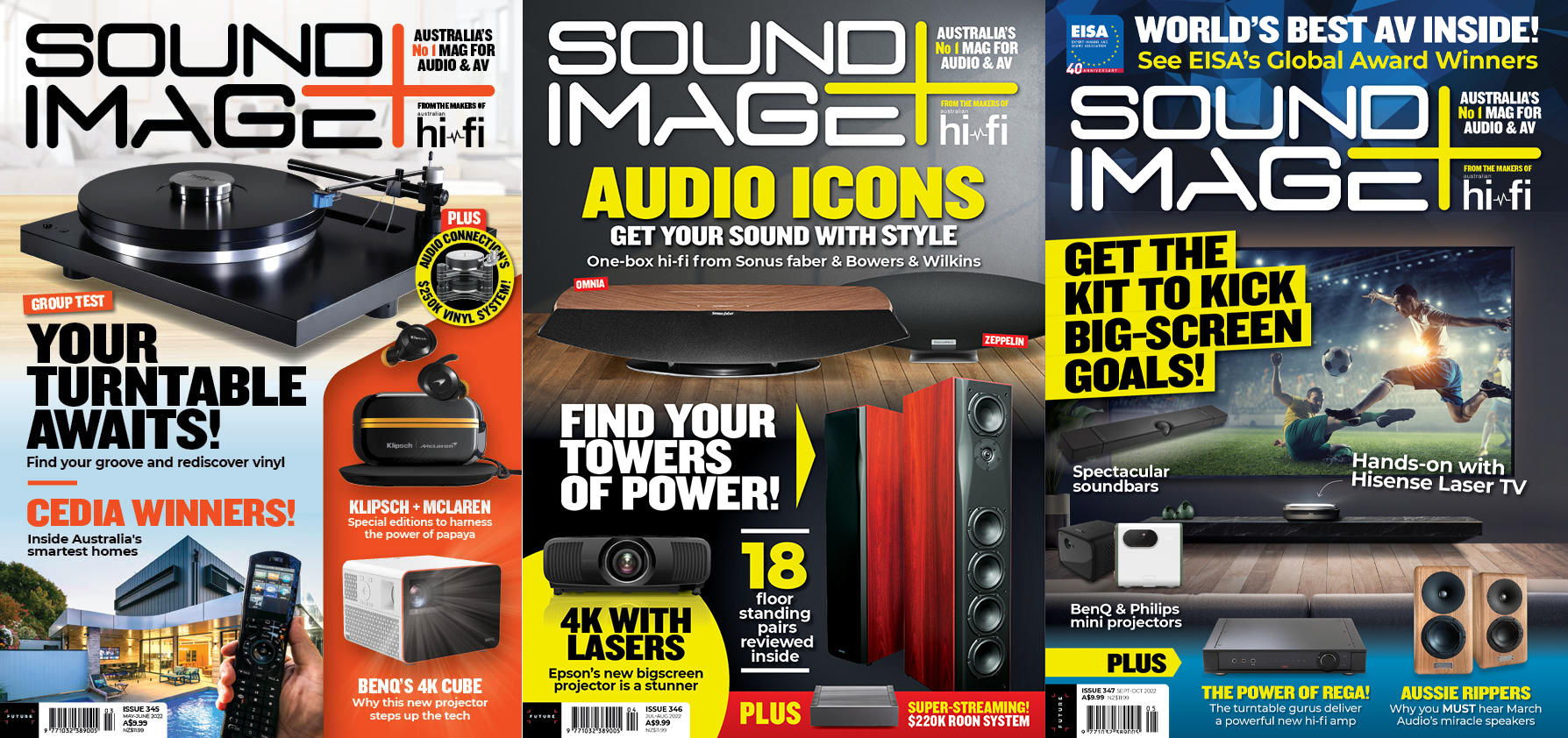
This review originally appeared in Sound+Image magazine, Australian sister publication to What Hi-Fi?. Click here for more information on Sound+Image, including digital editions and details on how you can subscribe. Read What Hi-Fi?'s global, star-rated JBL Spinner BT review.
JBL is not a traditional turntable brand: founded in 1946, it didn’t get the urge to produce a vinyl-playback machine until 2023, when it announced two: first the TT350 Classic, closely followed by this JBL Spinner BT.
They are notably different designs. The higher TT Classic is more traditional in appearance and operation, with a walnut-veneered chassis, a heavy die-cast aluminium platter, and a shiny front fascia. Its retro appeal fits perfectly with the brand’s recent ‘Classic’ speaker revival, and indeed perhaps it looks a little more Mark Levinson (a sister brand under Harman) in its aesthetic than the more colourful and in-yer-face brief for JBL's popular Bluetooth accessories.
The Spinner BT is far more modern and purposeful in both looks and operation, perfectly addressing the younger JBL audience who know their soundbars and smart speakers better than they do their K2s and Everests.
But why has JBL turned to vinyl only several decades into the 21st century? It’s more than simply tracking the thrilling revival of the noble LP record; it’s a sign of modern hi-fi marketing, which is far less mix-and-match than was traditional. Instead there’s a firm trend for brands to cover the whole hi-fi chain; they can then offer a complete system solution in an easy one-brand purchase.
A modern system might now comprise just a Bluetooth speaker and a smartphone. For such users, a Bluetooth-capable turntable would be the coolest possible addition. And who sells more Bluetooth speakers than anyone else? Why, JBL of course.
And it’s true, the JBL Spinner proves the perfect companion for such a Bluetooth-based system – indeed JBL supplied the Spinner BT to us with one of its new Authentics smart speakers, which might do the job very well.
And yet the inherent abilities of the JBL Spinner BT mean that it is not limited to the softer limitations of Bluetooth and a less-discerning youth audience: it proved to have true hi-fi credentials, making it capable of rather more.
The latest hi-fi, home cinema and tech news, reviews, buying advice and deals, direct to your inbox.
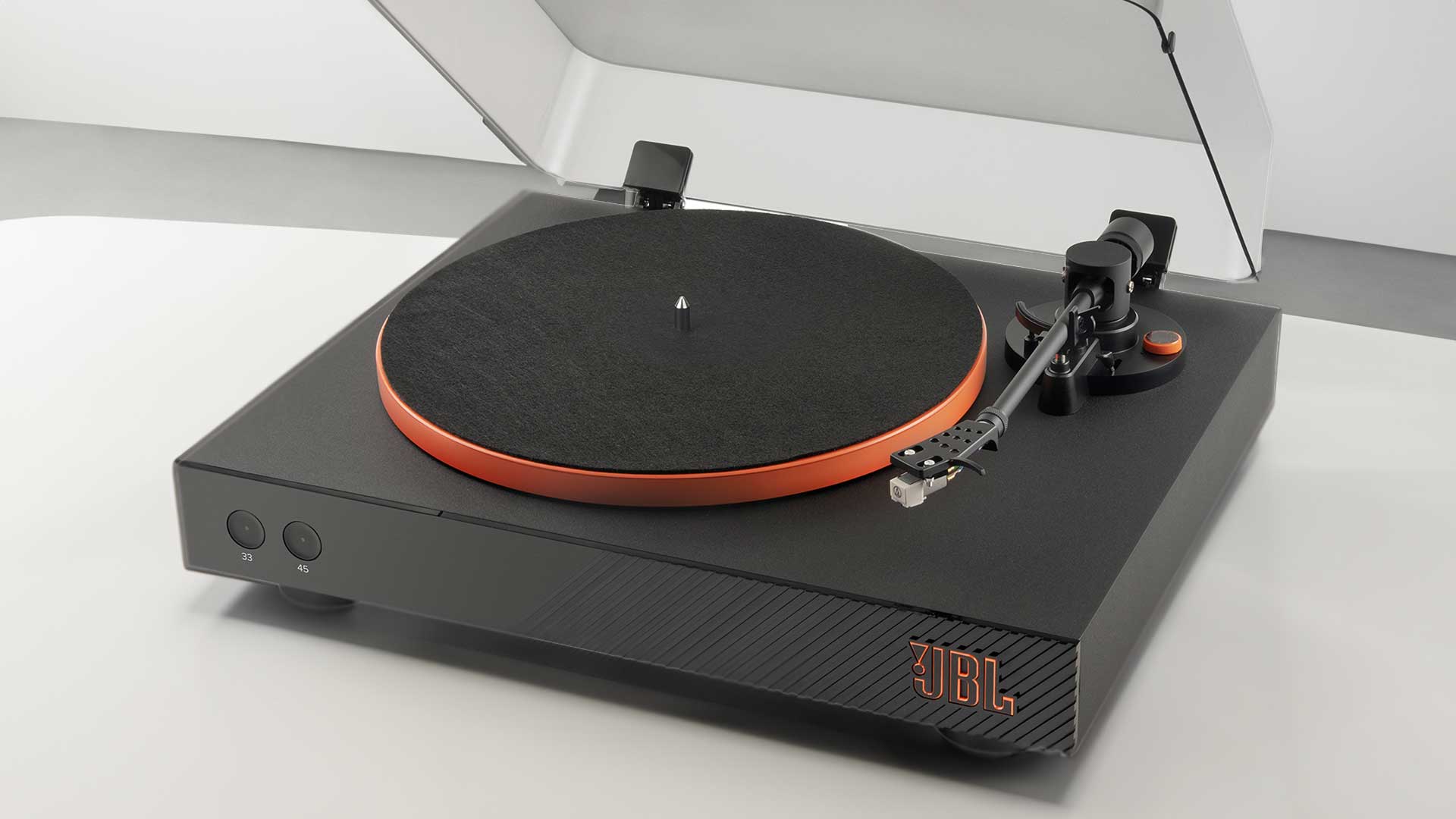
Build & features
While JBL’s higher TT350 Classic turntable is direct drive, the JBL Spinner BT uses the belt-drive design which is more traditional in a hi-fi turntable. Direct drive was once derided for its transmission of cogging, the little bumps in rotational speed from each pole of the drive motor, but modern solutions to this seem to have returned direct drive to respectability. But here it’s good ol’ belt drive.
There are two finishes available; we reviewed the more reserved of the two, with the platter and fittings all in black and just the antiskate wheel and the edge of the aluminium platter anodised to a gold finish.
But we confess we’d be tempted by the version with orange accents (pictured above), including a backlight behind the huge JBL logo that dominates the right edge of the plinth, opposite the left buttons to select either 33⅓ or 45rpm speed.
Working up from the business end of the signal chain, the cartridge is bought in from Audio-Technica, the widely-available moving-magnet AT3600L, so you’ll have no problem getting replacement stylii (the ATN3600L at around AU$30) or indeed replacing the whole cartridge (around AU$70).
The cart arrives aligned and mounted in a removable headshell which screws onto the aluminium tonearm with its adjustable counterweight and anti-skate dial. There’s not much information on the motor but speed accuracy is ensured by an optical sensor, “to guarantee perfect pitch” says the company. The belt-driven platter is topped with a supplied felt mat. The supporting plinth is substantially thick, though the full deck weighs only a middling 5.3kg. It has large rubberised and adjustable damped feet to reduce vibration, and a hinged cover to keep out both dust and acoustic feedback.
So there are three ways to take the signal from the cartridge and out of the turntable. Its headline ability is Bluetooth wireless streaming, and this includes the third-party vendor codec aptX HD. That will work only if you can achieve aptX HD transmission – which requires the codec to be supported by your receiving speaker or headphones as well as the Spinner. You should then achieve a “CD-like” level of sound quality, if that isn’t an outrageous way to describe the quality to which your vinyl is being digitised.
Do bear that digitisation in mind if you’re deliberately getting back to the analogue joys of vinyl: listening via Bluetooth means you’re converting your music to digital for the wireless link. It’s not analogue vinyl sound any more.
With aptX HD’s top bit-rate of 576kbps, something close to lossless CD-quality transmission should be possible. Indeed aptX HD can handle 24-bit files, though the Bluetooth noise floor is too high to provide the benefits.
But if you don’t have aptX at each end, it’s not clear which codec will be the fallback: optional AAC, or the mandatory SBC. Either will drop the quality of the Bluetooth link, and SBC more so than AAC.
The Spinner BT can also be a Spinner without BT. There are analogue outputs around the back (no earth cable required here), and these outputs can offer the phono level direct from the cartridge, ready to plug into a phono stage or an amplifier’s phono input or, if you flick on the ‘preamp’ switch at the rear, you get a line-level output suitable to feed into any standard amplifier input, or direct into active speakers. That’s because the Spinner BT has a built-in (switchable) moving-magnet phono stage. It would require this anyway to raise the level for Bluetooth transmission.
So there are many ways to play. Let’s set her up.
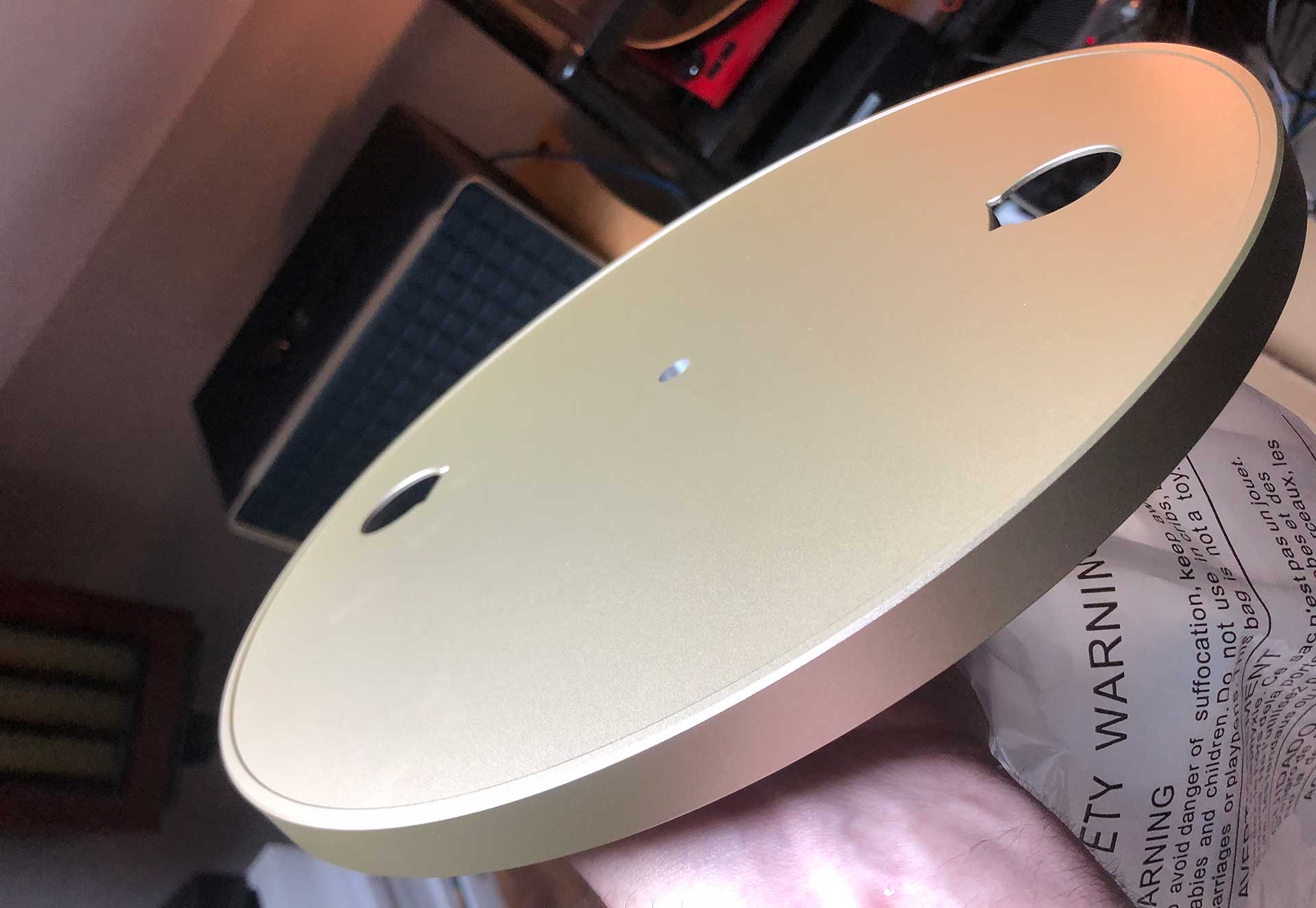
Set-up
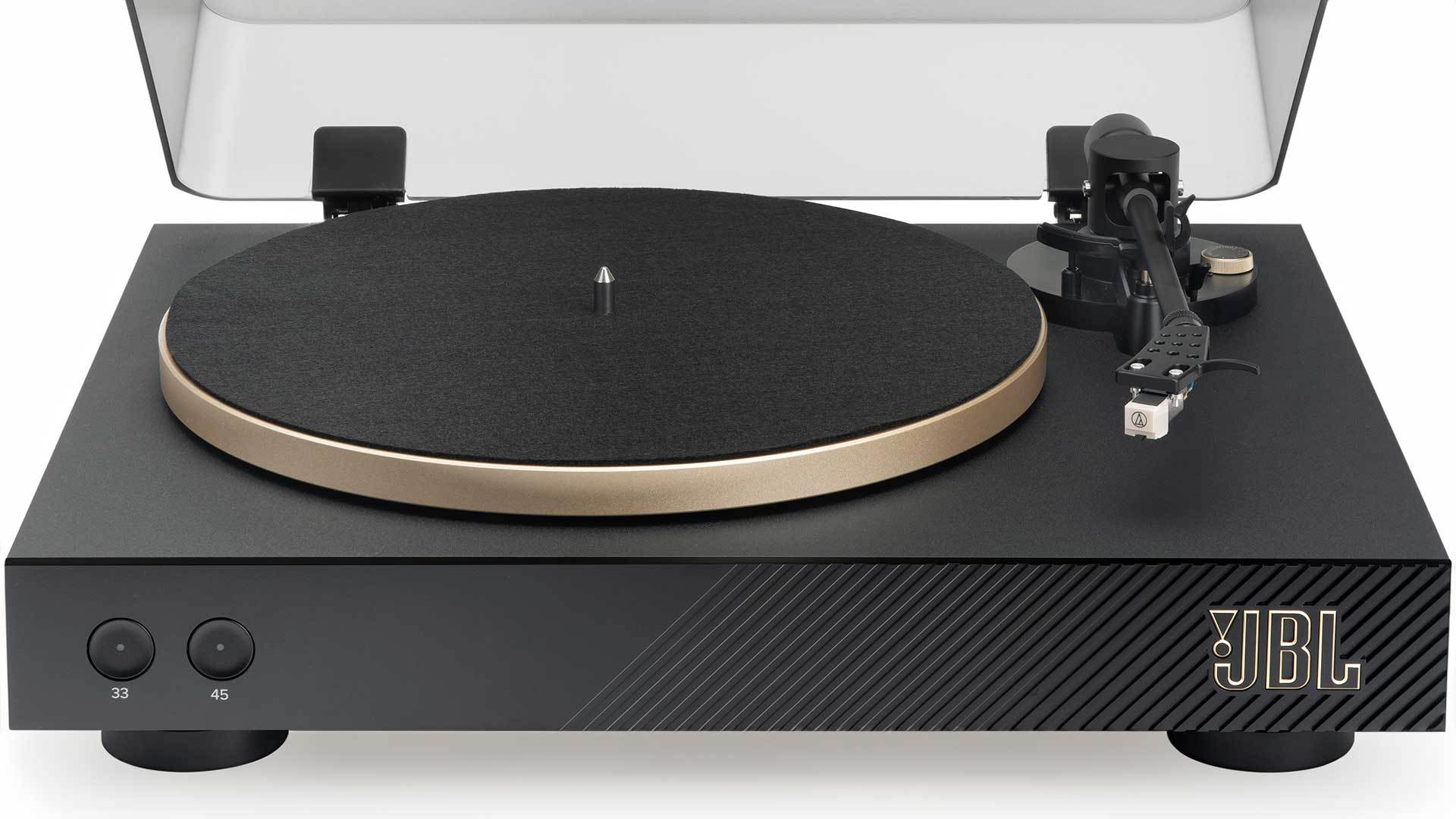
Type: belt-drive
Plinth: Black-finished MDF
Platter: Die-cast aluminium
Tonearm: aluminium, removable headshell
Cartridge: Audio-Technica AT3600L
Outputs: phono level, line-level, Bluetooth out (with
aptX HD)
Dimensions (whd): 435mm x 155mm x 368mm (without lid)
Weight: 5.3kg
JBL unusually provides early unpacking information on the outside of the box; a useful early warning, really, even though the flaps on which it’s printed will be facing down at the moment you need them.
But absolute full marks to JBL on the Quick Start Guide itself, inside the box with the cables and various bits. We had feared it would be one of those origami non-lingual sheets of diagrams, but instead we enjoyed perhaps the simplest guide to a turntable set-up we’ve ever seen – minimal but not too minimal, and pretty much foolproof, even for first-timers who may be encountering the Spinner as their first-ever turntable.
We followed it to the letter (turntables are a product where we actually read the instructions first rather than later), although as usual we jumped ahead to attach the cables prior to set-up. Turntable manuals always put cable attachment last, but by then you may have minimal access to the rear of a carefully balanced system, so it can pay to connect them first!
Then we followed the six-stage construction list. Fit the platter. The platter is a nicely anodised aluminium platter, with a lovely burnished gold which you’ll see on the edge under the record’s edge when playing.
Second, fit the belt around the motor pulley – the belt is pre-installed around the inside of the platter, with a piece of tape to pull it out and over the motor pulley without your filthy oily fingers touching anything, a neat system we see also on mid-price turntables from Audio-Technica and Sony, indicating perhaps some commonality of supply.
The cartridge is certainly from Audio-Technica, the logo prominent on the front of the white AT3600L cartridge in the headshell, the fitting of which occurs in the fourth instruction, after putting the felt mat on the now-belted platter.
Number 5 is to fit the counterweight, just roughly at this stage, and lastly the dustcover – hinges to the cover first, then slotted into the rear of the plinth.

Seeing now the complete turntable for the first time, we loved the look. The plinth rises up thick and sculptured, looking almost rubberised along the ridges at the right side, though it is all actually a sturdy plastic. The oversized logo looks fabulous. The dustcover is no factory-standard box but a stylishly curved and smoked lid (it reminded us of Jonny Ive’s work on the latest Linn Sondek) which drops down to sit on little spacers that guard against thumps, though they do create a small gap around the base for dust and sound.
Turn the page in the Quick Start Guide and the whole next page walks you through balancing the tonearm, Again the easy eight-point list will be hard to get wrong, even without a supplied gauge or card. Antiskate is applied via a dial, and from that and the requested counterweight position the tracking weight seems set to a fairly firm 3g; this was confirmed by our own stylus gauge.
Add power (press the power button at the back) and select your switch options if you haven’t already. We started at phono level via cables, with the little ‘pre-amp’ slider set to off. Notably, Bluetooth won’t work while the slider is in this position (something added to the manual as a stuck-in addendum), so if you alternate between phono-level playback and Bluetooth headphones, say, be careful when you go the other way, remembering not to blast your phono input with a line-level output.
The other slider is for the automatic start/stop of the platter. This is not as automatic as those which lift the arm at the end of playback; it’s all manual lifting here, except that the platter will start as you bring the arm over the record, and stop in the other direction. It stopped when you overhang the centre as well, but not early enough to stop the record when the stylus has gone into the end groove. There seems no penalty for using this, and it saves a button press or two.
Time to start listening.
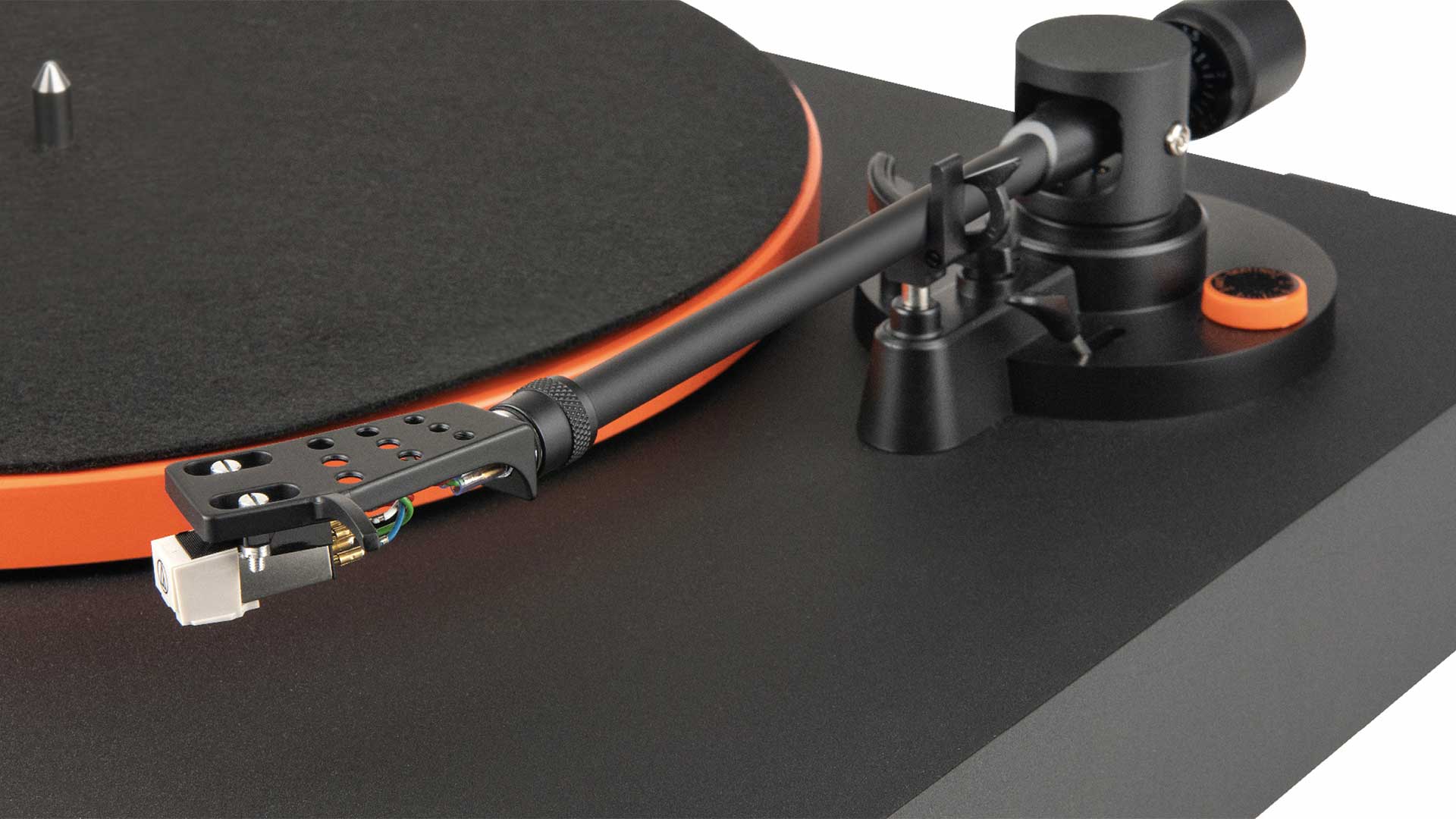
Sound
The arm lift lever is a little close in behind the pivot end of the arm but the finger lift is wide and high, so it’s easy to bring the arm in across the record which, if you’ve got that ‘auto’ option engaged, will start the motor spinning at your preselected speed (otherwise press the desired speed button).
Listening first through our in-house Musical Fidelity phono stage, then, we loaded a recently-acquired orange-vinyl copy of Jeff Beck’s ‘Blow by Blow’. Not only was the lead-in groove whisper quiet, with just a little right-channel rumble audible (through 12-inch woofers, to be fair), but the initial impact of You Know What I Mean was tight and bright, from Richard Bailey’s drum crack to the percussive and panned funky clavinets (and later fizzy lead synths) of Max Middleton, while soaring centrally above it all the inimitable Mr Beck had every inch of soundstage space he could hope for. This deck does not sound like a budget deck; it has the resolution and speed of higher-level performance.
This LP was tight, but not the last word in bass. We loaded an original EMI Australia copy of the compilation ‘Hey Jude’, which has some solid bass in the grooves, especially on The Ballad of John and Yoko and on the title track opening side 2, also a wonderfully recorded ride cymbal on the latter, and the JBL brought both out well, especially the ride in the left channel, its fully metallic tings right through until replaced by the very forward tambourine over the last verse. Original mixes, original vinyl: who needs the endless rounds of Beatles reissues when the originals sound this good? Got the vinyl? Stick with it!
Our standard comparison tracks allowed us to stack the Spinner BT up against some key rivals, and its own phono stage against its bare output. Keith Jarrett’s Flying pt 1 is a great piano tester, gentle to open and slowly growing with the trio; the piano showed good speed stability (and the RPM app had already shown it just 0.5 per cent below 33⅓rpm with 0.23 per cent wow and flutter) and overall good separation, but the built-in phono stage definitely softened the highs and closed the soundstage slightly when compared with the raw phono output played through a better phono stage, though we did get a little 50Hz hum through from the phono output, and with no earth wire to remove it. You won’t pick this quality difference unless you make the comparison, but know at least that there is room to upgrade from that built-in phono stage.
Compared to some rivals we preferred the JBL’s more neutral sound to a slightly boxier presentation from a price-comparable Audio-Technica, while the Sony 310 sounded extremely similar in nearly every way, including the slight preference for the phono output over line level.

We confess that we got much distracted after connecting the JBL Spinner BT via Bluetooth to the Authentics 500 wireless speaker which JBL had supplied with this turntable (pictured above left). Our full review of this box will appear in the February 2024 issue of Best Buys Audio & AV; suffice to say here it is capable of prodigious and perhaps slightly ridiculous bass, so some tone adjustment was required, but we could hardly believe how much fun it made vinyl playback.
That Jeff Beck LP, slightly lean when played back through the neutral hi-fi system, now had amazing energy and full in-yer-face bass. The Spinner/Authentics combo made classic vinyl singles sound huge; we grabbed fistfuls of them from the racks to play through, because it felt like we were back in the middle-school disco, getting ready to do The Bump with Kenny, a lost glam classic.
We played the next single B-side first, a big meaty bass pumping from the Authentics speaker without interfering with some supertangy echo-drenched guitar and then the full driving force of the instrumental Handling the Big Jets, B-side to This is the Sound of the Suburbs by The Members, a 7-inch well worth a re-visit for the Steve Lillywhite production, and ending in a most curious drum sequence, like someone got their first Syndrum for Christmas.
All this was pushed to pumped pseudo-perfection by the Authentics pairing, the speaker’s presentation also smoothing over some of the grottier singles in need of deep cleaning.
Of course, a wireless speaker reduces everything from stereo to more or less a single point, and the Bluetooth connection is putting a limit on the quality (it’s not clear what the exact codec is, but the Authentics speakers don’t support aptX HD, so it’s not a high-level one). And we found we sometimes had to re-pair them, so really, if the Spinner is adjacent, you’ll get better sound and a more reliable connection by connecting the Spinner’s line-level output to the minijack auxiliary input of the Authentics speaker. Indeed we should note that you can do these two things at the same time: for example we used the turntable’s line-level output for recording, while listening via Bluetooth through the wireless speaker.
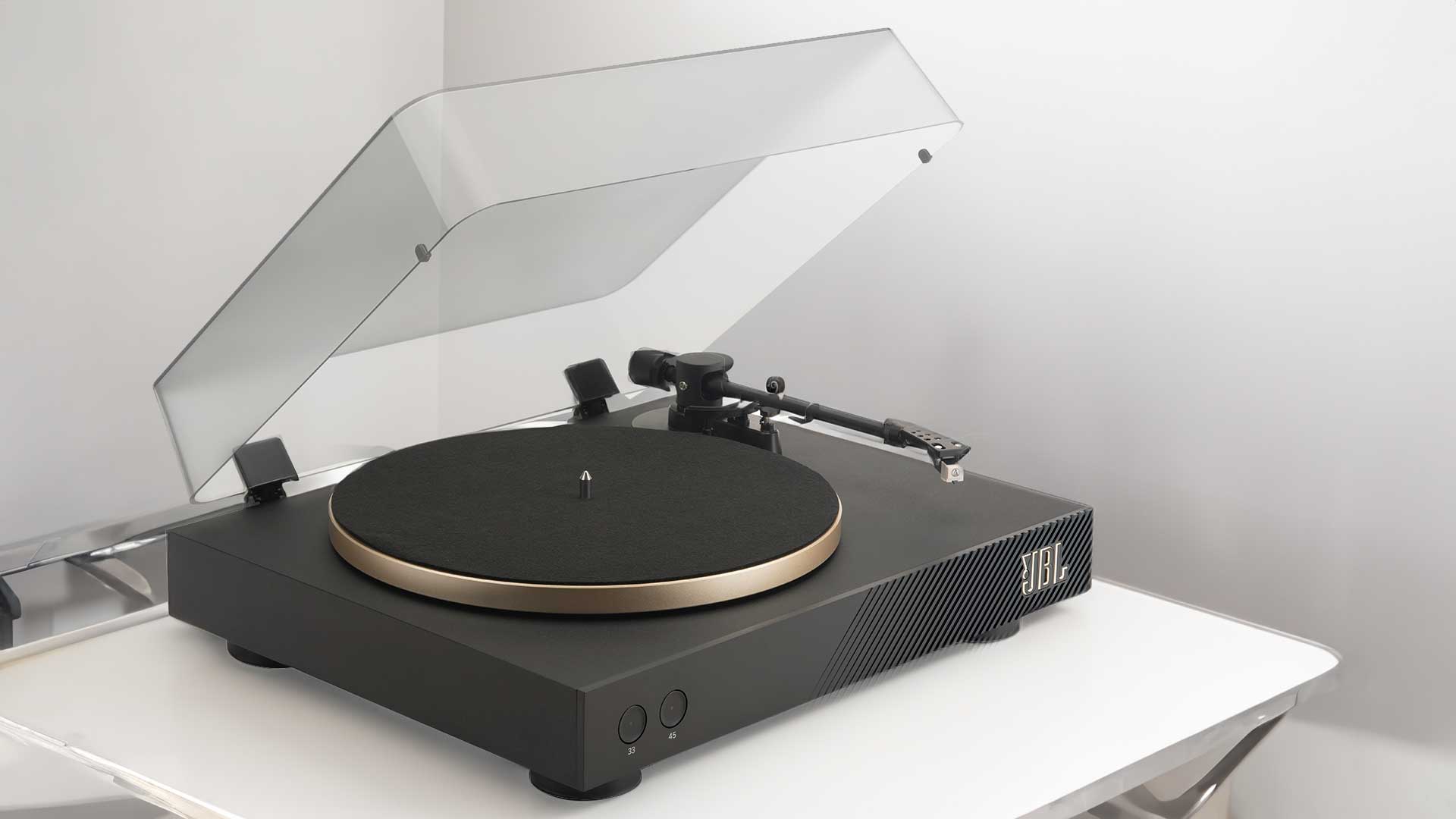
Before you think of thereby running two sets of speakers simultaneously in this way, you’ll be stymied by the delay inherent to the Bluetooth connection. The delay is weird when listening via Bluetooth only when you hear the needle drop or lift some quarter-second late, because of the delay in digitisation and transmission.
But the upside to Bluetooth is that you can have the turntable on the other side of the room, or wherever is convenient. The biggest advantage of a wireless connection is not needing to site the turntable and the receiving equipment next to each other.
Besides, it sounded great, give or take some tonal tweaking of the Authentics 500; despite the inherent digitisation and compromise in terms of the signal path, it makes vinyl even more fun.
As does its other Bluetooth joy, headphone playback, wandering around with records in your head; marvellous. And wandering back every three minutes to change the record, in case of singles, but subject only to the Bluetooth range in the case of LPs.
The Bluetooth range proved significant; when we beamed Malcolm McLaren’s single of Buffalo Girls to a pair of Sony noise-cancellers we got down two floors and a few steps into the garden before drop-outs intervened; we barely got back in time to flip the single for the unspeakable square-dance version on the B-side. There’s no arguing about quality when enjoying such convenience; this is as good as you’ll get short of Ultra WideBand taking over the world, so just relax, forget about bit-rates, and enjoy it.

Verdict
Of the three ways to play here, the phono output is the best quality, the line-level output the most versatile, and the Bluetooth wireless playback the most fun. The fundamental level of this turntable is up with the best at the price, which means beyond some at the price; it looks fabulous and it’s easy to use as well as simple to set up, thanks to that excellent start-up guide.
We reckon the JBL deck should sell buckets. It may have taken the company 77 years to get round to releasing a turntable, but on this showing we don’t reckon they’ll stop any time soon.

Jez is the Editor of Sound+Image magazine, having inhabited that role since 2006, more or less a lustrum after departing his UK homeland to adopt an additional nationality under the more favourable climes and skies of Australia. Prior to his desertion he was Editor of the UK's Stuff magazine, and before that Editor of What Hi-Fi? magazine, and before that of the erstwhile Audiophile magazine and of Electronics Today International. He makes music as well as enjoying it, is alarmingly wedded to the notion that Led Zeppelin remains the highest point of rock'n'roll yet attained, though remains willing to assess modern pretenders. He lives in a modest shack on Sydney's Northern Beaches with his Canadian wife Deanna, a rescue greyhound called Jewels, and an assortment of changing wildlife under care. If you're seeking his articles by clicking this profile, you'll see far more of them by switching to the Australian version of WHF.

